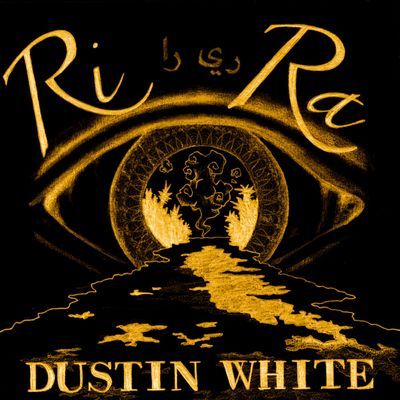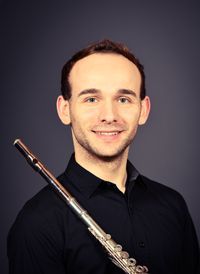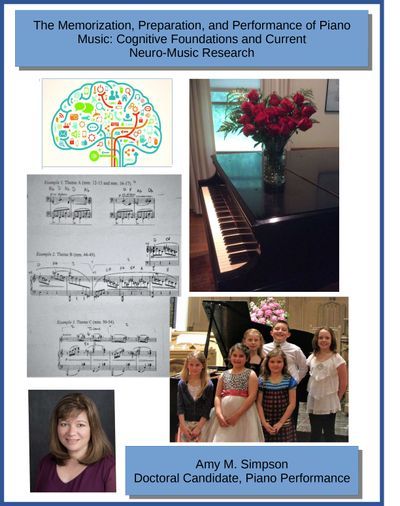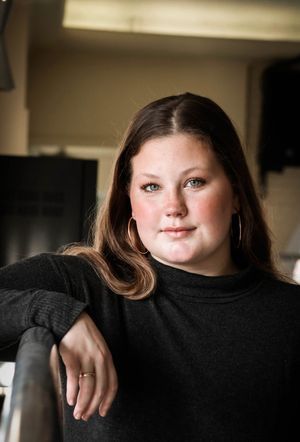Research paper, October - December 2020Also exhibited at: Northeast Horn
Workshop Presentation - forthcoming (March 2021); The Horn Call Journal - forthcoming
(tentatively accepted for October 2021 issue)
Multiphonics, also known as vocalizations or horn chords, is the technique of producing
multiple sounding pitches while playing an instrument which is designed to play
only one note at a time. Typically, producing a multiphonic pitch requires playing
one note on the instrument while simultaneously humming or singing another note,
though brass players can also produce multiphonics using only the lips. Multiphonics
is usually considered a novelty technique which grew in popularity during the
twentieth century, though composers and performers have been aware of its potential
since at least the eighteenth century, as illustrated by a famous example from
Carl Maria von Weber’s Horn Concertino (1806, rev. 1815).
This paper traces the use of multiphonics on the horn throughout the instrument’s
history, including an overview of the method books that comment on the technique,
performers who were important contributors to the technique’s popularity, and
compositions throughout the horn’s history in which multiphonics have appeared.
Although multiphonics has grown in popularity since the latter half of the twentieth
century, research on its history continues to be limited. The paper also addresses
the gaps in the literature and postulates how these gaps may be resolved.
Decline is an expression of the isolation, despondence, and loss of purpose I faced
in 2020 as a result of the COVID-19 pandemic. It is an exploration of the ways
that both external and internal changes combine to reshape realities, particularly
in times of suffering. I depict a side-by-side view of my morning routine before
and during the pandemic. On the left, a happier version of myself experiences
a normalcy I took for granted. She is motivated and her outlook is positive.
On the right, I feel the weight of mental pathways newly pried open and a shifted
understanding of what it means to exist. Day-to-day activities seem to lose relevance.
Supporting Content:
Watch "Decline"
Enough
by Taylor Walker, Senior, School of Theatre & Dance
Faculty Mentor: Yoav Kaddar
Dance Performance, November 28, 2020Also exhibited at: American College
Dance Association (ACDA) adjudicated screen dance festival on April 10-24 2021
Abstract
In this creative work, I wanted to involve myself in the Black Lives Matter movement
and perform a creative interpretation of the feelings I embrace. The protests
and speeches and other creative works done by the community like music, art,
design and dance has shown how they view the issues that pertain to racism.
With all the hidden history of black Americans during slavery, segregation,
and heinous crimes against people with dark skin, is hard to process. Taking
it all in can give the longing question, Why? Taking a stand together can end
racism in this country and form a type of unification that we have never seen
before. I was grateful to be a part of the marches and protests amongst COVID
in summer 2020. This community has come together to make sure we are noticed
in accordance to Black Lives Matter. This is how I wanted to display my voice
in the movement in my peaceful protest called "Enough."
Finding Our Voice: Jessie Montgomery's Banner
by The Montani Quartet, MM and DMA, School of Music
Faculty Mentors: Dr. Erin Ellis and Dr. Mitchell Arnold
Musical Performance, February 18, 2021
Abstract
“What does an anthem for the 21st Century sound like in today’s multicultural
environment?” Jessie Montgomery’s Banner, a work written for solo string quartet
and string orchestra, was commissioned by the Sphinx Organization as a tribute
for the 200th anniversary of the National Anthem of the United States. Banner
includes many tunes from different cultural backgrounds such as National Anthems
and folk songs. This music portrays how each culture continues to embrace their
own roots while enriching the American cultural landscape. The performance
of the piece creates the perfect scenario where all cultures interact exalting
the values of liberty and justice for all. This work was performed for
the very first time on campus in February 2021. The creative process encountered
many challenges for the quartet. These challenges include the acoustical issues
related to the COVID-19 protocols (the spacing of six feet) and difficulties
with the contemporary style of compositional writing. The Montani Quartet worked
with the West Virginia University Symphony Orchestra (WVUSO) for this concert.
With the help of the WVUSO conductor, Dr. Mitchell Arnold, and our chamber
coach, Dr. Erin Ellis, the ensemble was able to reach our performance goals:
collaboration and communication. This performance was also the representation
of Montani’s own reality: a multicultural ensemble with members from three
different countries working together to find their own voice while communicating
the composer’s message.
Goldmark: Passim
by Nathaniel Turner, Junior, School of Music
Faculty Mentor: Dr. Mitchell Arnold
Performance and Research Paper, October 2020
Abstract
All that persists of Goldmark’s output in the repertoire today is his A minor
violin concerto. Both performers and critics have often made overarching statements
about this concerto, which hasn’t recently enjoyed the popularity of some of
its romantic cousins. This has allowed such statements to go broadly unexamined.
Phillip Huscher, in program notes for the Chicago Symphony Orchestra, invokes
Goldmark’s love for Mendelssohn. The liner notes for Vera Tsu’s 1996 Naxos
release claim that this work is a “development of the musical language of Mendelssohn,”
suggestive of his “idiom,” and that it exists “firmly in [Mendelssohn’s] tradition.”
Mendelssohn certainly was a titanic cultural figure during the formative years
of Goldmark's career, however, study of Goldmark’s concerto and memoir indicates
less of a great Mendelssohnian influence and more of a wide-ranging network
of inspirations in the compositional process. Despite the presence of Mendelssohn-like
“turns of phrase,” similar key area/figuration combinations, even quotes, these
are present from various sources, and the alleged Mendelssohnian characteristics
appear in arguably less convincing ways than the influences of composers whom
Goldmark knew, worked with, and admired. Among them, Liszt, Brahms, and Wagner.
With such a thick layer of attribution looming over Goldmark in the public
consciousness, the task at hand is to elucidate his influences, and not expect
that the listener distinguish such influence by “private intuitions, but from
a study of [the] musical imagery.” We must examine the “expressive vocabulary”
used by Goldmark and seek out the origin of its several contents.
Intuitive Response to Materials and the Implications on Meaning in Sculpture:
Explorations in Concrete
by Molly Davis, MFA in Sculpture, School of Art & Design
Faculty Mentor: Jason Lee
Sculpture, September - December 2020
Abstract

The primary focus of my research was an exploration of the material of concrete
as a sculptural medium. My first use of concrete was primarily utilitarian,
using it as a base for a sculpture. This first experiment piqued my curiosity
and led me to pursue the material further. I became interested in concrete
for its color, texture, weight, and versatility, as well as the associations
with its traditional uses in construction and urban development. Throughout
my experimentation, I discovered more reasons to appreciate concrete as a medium.
I found that I particularly enjoyed the process of removing the molds from
the cast concrete. It was such an act of discovery to take apart, tear, or
break away the form from around the concrete to see what had resulted inside.
I was often shocked at the detail and sheen that was left on the surface of
the concrete. In other instances, the concrete would crumble, crack, or have
holes from trapped air. Either result I found interesting. The concrete was
simply acting as itself, with the effects of any variables in the production
process, allowing the imperfections and anomalies to happen. From there, I
took the resulting pieces of concrete, simple blocks, casts of consumable products,
experiments in texture, and I considered their formal qualities, their surfaces,
and possible societal associations, and I responded by combining and arranging
the pieces into various sculptural works that reflect or complement their individual
attributes.
Images: Larder, Larder, Stack, Intersection
Moralizing the Music of Italian Renaissance Courtesan: Barbara Salutati and
Niccolo Machiavelli
by Micah Buser, Junior, School of Music
Faculty Mentor: Dr. Jennifer Walker
Research paper presentation, August 15, 2020 - February 28, 2021
Abstract
During the Italian Renaissance, courtesans used their musical talents to attract
wealthy and powerful men to whom they functioned as escorts. Though little
is known about her life and work, this presentation shows how Barbara Salutati,
unlike other courtesans of her time, used her musical talents to her advantage
by inspiring the creative output and everyday life of one of her most famous
patrons, Niccolò Machiavelli. Public performances were not common for women
during the Renaissance, but Salutati still took the stage often and under Machiavelli’s
direction. But though courtesans like Salutati and a public figure like Machiavelli
often had reputations that marked them as deceitful, immoral, and dangerous,
these individuals curated their public images to be an antidote to such deceitful
ills. To create an acceptable image for Salutati in the public eye, Machiavelli,
and a commissioned artist, Domenico Puligo, blended aspects of Salutati’s career
and appearance with the most visible markers of Christianity – even going so
far as to compare her to Christianity’s most idealized woman, the Virgin Mary.
This transformation was enacted within the framework of Machiavelli’s own views
on religion in society: while he saw religion as a man-made system of beliefs,
he found the moral behaviors encouraged by religion to be necessary elements
of a well-ordered society. This project reveals how Salutati’s social and musical
image, as the product of a collaborative creation between a courtesan and her
high-profile client, both conformed to and challenged the narrative of the
Italian Renaissance courtesan.
Supporting Content:
Ri Ra: An Album of Flute Works Combining Western Classical and Middle Eastern
Aesthetics
by Dustin White, MM, School of Music
Faculty Mentor: Nina Assimakopoulos
Recording, June 16, 2020 - February 26, 2021
Virtual performances of three of the seven works (including one world premiere)
have occurred during live-streamed WVU flute studio recitals in the Fall
2020 and Spring 2021 semesters. However, none of the recordings appearing
on the album have been presented yet due to contractual agreements between
the composers, record label, and artist and the fact that the album is in
post-production at the time of this application.
Abstract

Ri Ra is a solo recording project featuring works for multiple members of the
flute family. It is the sole recorded anthology of its kind providing documentation
of unique compositional thought within contemporary classical music. The
project provides the general public, musicians, and scholars who specialize
in the study of contemporary classical music access to a novel subgenre of
music.
Most of the works collected for this album were selected as a result of a
call for scores which took place from 6/16/20-9/11/20 and received over 70
submissions from composers all over the world. This call strove to find compositions
inspired by Middle-Eastern musical traditions and/or by composers of Middle-Eastern
descent. The composers selected as winners from this call are from the countries
of Iran and Lebanon.

My research includes the investigation of recording studio techniques, liner
note research and writing, commissioning album artwork from a visual artist,
as well as social media promotion in anticipation of the project release.
This album’s repertoire requires mastery of innovative performance practices
on multiple instruments that go beyond the conventional playing techniques
of the instrument, known within the field as "extended techniques."
The recordings on this album are the first commercially available recordings
of the works, while three of the seven works are premiere recordings of brand-new
works. The album is in post-production, with a scheduled release date in
April on the Mon Hills Records label.
Image 1: Album artwork displaying the name “Dustin White” as well as
the title of the album “Ri Ra” in Latin and Arabic text. An eye with smoke
and trees in the pupil is pictured with a river flowing out of the eye's
pupil. Album artwork by Emma Riehlman.
Image 2: Headshot of Dustin White with his flute
Suite of New American Dances: I. Landy
by Anthony Panebianco, MM, School of Music
Faculty Mentor: Yu-Chun Chien
Research/Composition, September 2020 - March 2021
Abstract
Suite of New American Dances is a creative and research centric project combine
the various disciplines studied during my time at WVU; Conducting, Composition,
and Education. Designed to be an homage to Robert Russell Bennett's Suite
of Old American dances, the suite incorporates quotations, stylistic listening,
and popular music sensibilities. Each movement is meant to be a continuation
from its predecessors dances: Lindy, Twist, Hustle, Break, Thrash, and Grind.
Bennett's arrangements and structures were researched and analyzed in the
compositional process, as well as the standards of the great American songbook
and the dance styles of the Jazz age for this particular piece (Lindy). Each
part was written individual with consultation of conductors and players being
a primary source of feedback, as well as the incorporation of more contemporary
composing/arranging techniques and lexicon.
The Memorization, Preparation, and Performance of Piano Music: Cognitive
Foundations and Current Neuro-Music Research
by Amy Simpson, DMA, School of Music
Faculty Mentor: Peter Amstutz
Research Paper, May 1, 2020 - February 23, 2021
Abstract

Memorization of piano music for performance has often been shrouded in mystery.
Now, there is a body of neuro-music research that addresses how musicians
perceive, learn, and memorize music, and how these processes operate in music
performance. This paper is a compendium of such research, specifically focused
on piano music and piano performance, intended to benefit performing musicians,
professional teachers, music students, and neuro-music researchers, alike.
This research explains the operation of human memory systems, including the
concepts of short-term memory, long-term memory, working memory, chunking,
categorization, schemas, and auditory scene analysis.
From this platform, the paper addresses aspects of music memorization, such
as perceptual memorization, multi-modal memorization, plasticity, individual
differences, memory for melody, expertise, meaningfulness, and reward. A
brief history and discussion of motor learning and generalized motor programs
precedes current research comparing motor learning to perceptual learning.
This research discusses memory acquisition, stabilization, and sleep consolidation,
supported by a compilation of current piano specific research. Further, it
considers the role of the original modality of learning, and reviews best
music practice techniques and theories, including significant aspects of
metacognition and the importance of attention.
This work covers auditory imagery at length, including multi-modal imagery
as used by musicians in practice and in performance. Additionally, this paper
presents new information on the abilities of working memory in practice and
performance, and methods for developing music expressiveness.
Supporting Content:
Mentor's Statement (PDF) |
Touching Light: A Framework for Music-making in Mixed Reality
by Ian Riley, DMA, School of Music
Faculty Mentor: George Willis
Research Paper/Dissertation, September 2020 - March 2021
Abstract
Drawing upon the historical development of analog and digital technologies
alongside the proliferation of computer assisted performance practices,
this research seeks to develop a framework for integrating Mixed Reality
applications to live musical performance, specifically through the creation
of a Microsoft HoloLens 2 Mixed Reality application to facilitate a live
performance of an original musical composition for percussion and real-time
Mixed Reality environment. The application enables a performer to interact
with virtual (holograms, VSTs, etc.) and physical (vibraphone, tuned drums,
microphones, etc.) objects to present a performance of an original musical
work. Tandem to the development of the HoloLens application was the composition
of an original score for solo percussionist and holographic environment.
The score was composed to uniquely serve this interaction between and engagement
with virtual instruments and Mixed Reality environments.
Fundamentally, this research seeks to provide a methodology for musicians
to engage with Mixed Reality performance opportunities, specifically through
the recreation and adaptation of an original composition facilitated via
a Microsoft HoloLens 2 application. A proposal of idiomatic performance
practices for music-making in Mixed Reality functions as the focus of this
project, this framework was derived from iterative experimentation with
the Microsoft HoloLens 2 and facilitated by the author’s practical music
performance experience.
Watch Ian's Project Introduction (YouTube)
Wait for Me: To Hell and Back
by EJ Wogoman, Katie Martin, and Ashley Knox, Juniors, School of Music
Faculty Mentor: Cynthia Babin Anderson
Music performance, January - March 2021
Abstract
We went to hell and back before the world went to hell and hasn’t come back.
In March 2020, the WVU oboe studio took a trip to New York City where we
saw Broadway’s Hadestown, a modern retelling of the classic Greek myth
of Orpheus and Eurydice. Its resounding message of hope is best demonstrated
through these lyrics from the show: “I’m working on a song / it isn’t finished
yet / But when it’s done and when I sing it / Spring will come again.”
The world changed upon return from NYC, with school moving online just
days following, but Hadestown’s message stuck with us. In January 2021,
Professor Anderson approached the oboe trio about doing something Hadestown
related again. Ashley, a composition major, got to work arranging. We chose
the track “Wait for Me” because it is representative of our current situation,
waiting for the world to return to normal. Additionally, this is Katie
and Ashley’s last semester in the oboe studio, and they graduate into a
world of unknowns, just as Orpheus descended into the unknown. We were
fortunate enough to find vocalists, Juwan and Dallan, willing to take the
roles of Hermes and Orpheus. Other double reeds were happy to lend their
skills and Professor Joshua Swiger and Jason Zeh recorded. In this
scene, Orpheus seeks out Eurydice, who has just gone to Hadestown searching
for warmth. Hermes tells Orpheus it was his fault, and the only way to
get her back is to take the long road to Hadestown.
Women in Dance: Making Noise Through Movement
by Lilly Runion, Junior, School of Theatre & Dance
Faculty Mentor: Maureen Kaddar
Dance Choreography and Performance, September - December 2020
Abstract

This creative work consists of a piece I choreographed and directed the filming
of, titled “La Femme.” This piece was inspired by my passion for women’s
issues and my studies as a Dance and Women’s and Gender Studies Major. In
the Fall of 2020, I conducted a research project under the guidance of Professor
Maureen Kaddar. This research involved exploring the impacts of female dancers
and choreographers through history, dating back to the origin of dance itself.
It was throughout this research that I was inspired to choreograph a piece
that would reflect the oppression and silencing of women throughout history,
despite their significant roles and impact. I choreographed “La Femme” over
the course of three months, drawing inspiration from both my personal experiences
as woman, as well as the experiences I have learned about throughout my studies.
Due to the ongoing pandemic, I had the opportunity to adapt and take this
dance that would traditionally be performed on stage, and transform it for
film. I embraced this opportunity to enhance my vision through visual effects
and editing. In preparation for filming “La Femme,” I attended two separate
online seminars to expand my knowledge of dance on film. The piece was presented
on November 28, 2020 during the WVU Dance Virtual Concert.
Watch Lilly's Project Introduction (YouTube)